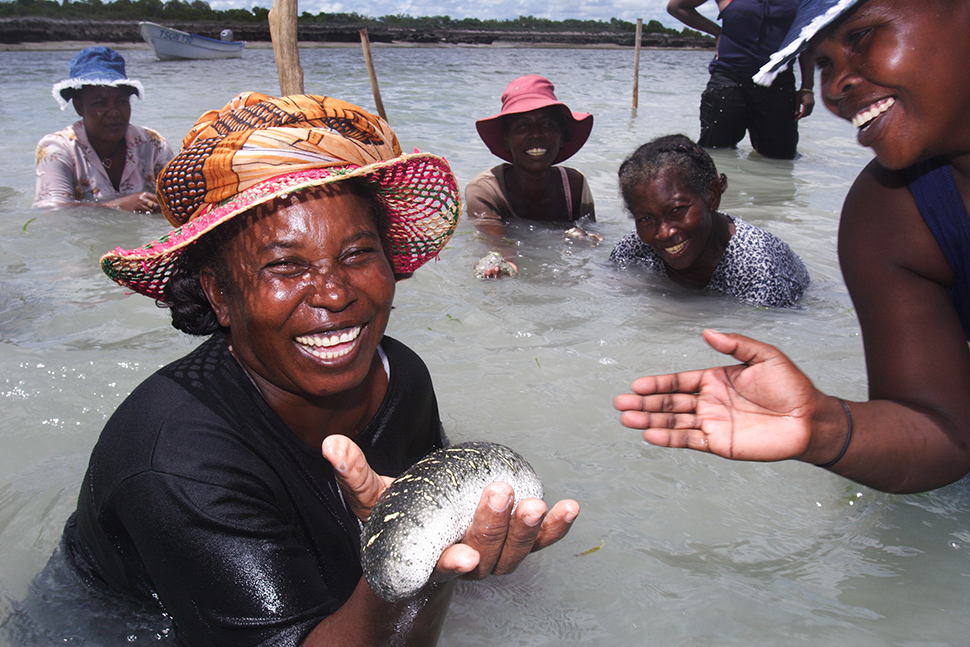Attributes of Coral Reef Resilience
The capacity for coral reef social-ecological systems to be resilient is driven by specific attributes. Attributes are the components of each dimension (ecosystem, community, governance) that are most critical to conferring resilience when that dimension faces stress. Understanding these attributes is key to coral reef ecosystem management.
Ecological Resilience Attributes
A few key attributes for coral reef ecosystems include:
- Diversity and Functional Redundancy – High levels of biodiversity increase the chances of varied responses to threats. Diversity includes genetic diversity, species diversity, and morphological diversity of corals and other reef species, as well as diversity in the assemblages of zooxanthellae. Functional redundancy refers to different species performing the same role or function within the reef ecosystem, which provide a safety net should one species be lost from the system. Functional groups on a coral reef include habitat builders, primary producers, bioeroders, grazers, browsers, and predators. ref
- Recruitment – Recruitment is the process by which young individuals (e.g., fish and coral larvae, algae propagules) undergo larval settlement and become part of the adult population. Natural recruitment is an important indicator of reef resilience. On a healthy reef, recruitment ensures high levels of biodiversity and functional redundancy. On a damaged reef, recruitment ensures recovery. Favorable recruitment conditions are facilitated by physical oceanographic conditions such as oceanic currents, eddies between reefs, and micro-currents within reefs; larval sources which may be from within the same reef (self-recruitment) or from another reef (source reef); and suitable habitats, both in terms of space availability and type of substrates.
- Herbivory – Since healthy herbivore populations keep macroalgae from overgrowing corals or inhibiting coral recruitment, they are critically important to the resilience of coral reefs. Herbivorous fishes are divided into four functional groups, based on their role in controlling algal growth and maintaining the reef substrate for coral recruitment. These include scrapers/small excavators, large excavators/bioeroders, grazers/detritivores, and browsers. Each functional group makes an important and complementary contribution to reef resilience.

School of the surgeonfish, Acanthurus coeruleus, grazing in Flower Garden Banks National Marine Sanctuary. Photo © G.P. Schmahl/NOAA (left); The bumphead parrotfish, Bolbometopon muricatum, excavating. Photo © Matt Curnock/Ocean Image Bank (right)
Social Resilience Attributes
Understanding the social attributes of a community that strengthen (or weaken) the resilience of socio-ecological systems is the subject of ongoing research and requires investigating the resilience of the communities and their governance systems. A few key attributes include (adapted from Cinner and Barnes 2019, Reef Resilience Framework):
- Resources and Livelihoods – Technical, financial, human, and service-based resources can help local communities adapt to the loss of reef-dependent livelihoods. A range of resources can provide access to various livelihood options and financial buffers.
- Knowledge and Stewardship – When communities are informed, engaged, and empowered to care for their reef resources, they become more aware of resilience challenges and are more likely to support reef management efforts. Understanding and integrating traditional knowledge is also key to building stewardship and trust in the management process.
- Health and Culture – Human health is an essential aspect of overall wellbeing. It gives the capacity to cope with various challenges regardless of resilience in other areas. Communities that prioritize both health and cultural practices are better equipped to handle and mitigate the impact of changes on reef ecosystems.
- Networks and Relationships – The support, accessibility, and scope of networks and relationships within a community are crucial to promoting community wellbeing. Robust networks and relationships help communities become more resilient to unexpected disturbances and enable them to collaborate more effectively to overcome challenges.

The farming of sea cucumbers is an alternative livelihood to other extractive fishing practices. Photo © Garth Cripps/Blue Ventures
Governance System Attributes
The capacity of governing bodies to support the resilience of the ecosystem and its community is influenced by the following attributes (adapted from Reef Resilience Framework):
- Rules and Regulations – Governance systems that respect traditional rights, align with current values, and receive adequate resources will contribute to resilience.
- Representation and Inclusion – Governance processes and structures that prioritize inclusivity and representation tend to be viewed as legitimate and receive greater respect from the community. This leads to a deeper comprehension of the underlying causes and effects of challenges to resilience.
- Leadership and Management – To support the resilience of reefs and the communities that rely on them, governance arrangements must be adaptable and flexible. Effective governance structures clearly outline roles and responsibilities while demonstrating strong leadership.
- Accountability and Equity – Governance arrangements play a critical role in holding organizations accountable while pursuing fair distribution of benefits and minimizing involuntary risks to enhance the adaptive capacity of vulnerable groups and society at large. Effective governance ensures equitable access to resources and opportunities, which in turn contributes to the resilience of the system.

Workshop with Traditional Owners in Carnavon, Ningaloo, Western Australia to identify suitable sites for coral reef restoration. Photo © Joel Johnsson
